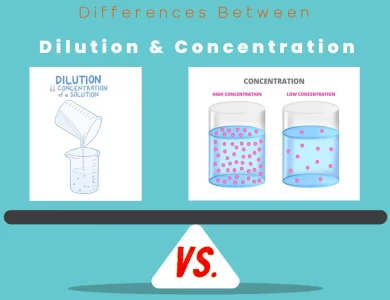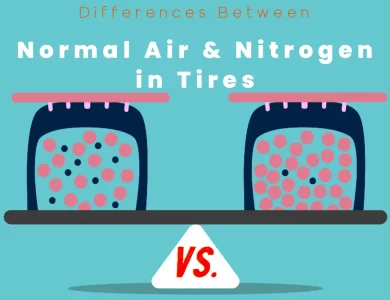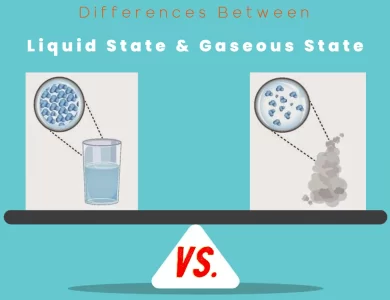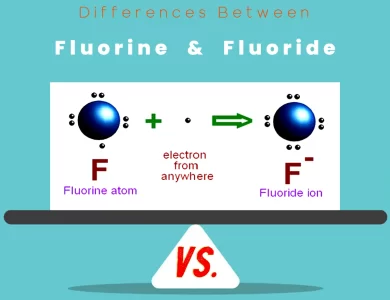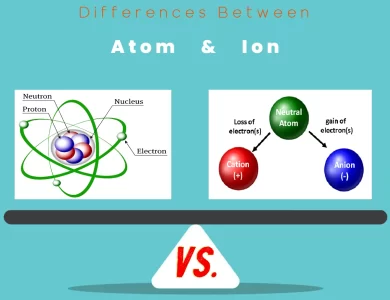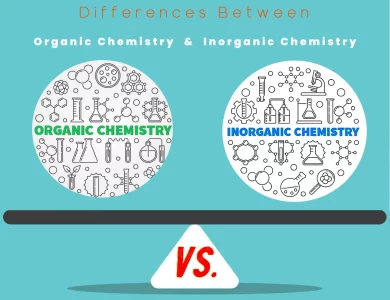
| Aspect | Organic Substances | Inorganic Substances |
|---|---|---|
| Definition | Compounds based on carbon atoms, often bonded to hydrogen and other elements. | Compounds that lack the carbon-carbon (C-C) bond; diverse elements and properties. |
| Origin | Found in living organisms and synthesized in the laboratory. | Found in non-living matter and natural minerals, often synthesized industrially. |
| Bonding | Emphasis on carbon-carbon (C-C) and carbon-hydrogen (C-H) bonds. | Bonds involving various elements, such as metal-metal and metal-nonmetal bonds. |
| Complexity | Often intricate and complex molecular structures. | May have simple or complex structures, depending on the compound. |
| Examples | Proteins, carbohydrates, DNA, pharmaceuticals. | Salts, metals, minerals, acids, bases. |
| Functional Groups | Functional groups play a key role in determining properties and reactivity. | Functional groups are less prominent; properties depend on elemental composition. |
| Isomerism | Structural and stereoisomerism common due to carbon’s versatility. | Isomerism less common and often related to arrangement of ions in crystals. |
| Applications | Pharmaceuticals, agriculture, materials, biochemistry. | Electronics, catalysis, materials science, energy technologies. |
| Sustainability Focus | Green chemistry principles applied for environmentally friendly processes. | Recyclability of certain inorganic materials and development of sustainable technologies. |
| Properties | Diverse properties due to varied functional groups and bonding. | Unique properties due to elemental composition and bonding types. |
| Biological Relevance | Essential for life processes; biomolecules and biochemical reactions. | Less directly related to biological systems, but metal ions play roles in organisms. |
| Environmental Impact | Concerns over synthetic organic compounds’ impact on environment. | Inorganic pollutants can have environmental impact, but some compounds are more stable. |
| Materials and Devices | Polymers, biomolecules, organic electronics. | Semiconductors, catalysts, metals, nanomaterials, inorganic electronics. |
| Flexibility in Reactions | Wide range of reactions and functional group transformations. | Reactivity often depends on elemental properties and bonding types. |
| Recyclability | Some organic materials can be biodegradable; depends on specific compounds. | Many inorganic materials are highly recyclable due to their stability. |
Our tale begins with organic substances – those intricate compounds that pulse with life’s rhythms. Think of them as the building blocks of existence, forming the intricate blueprints of everything from the food we savor to the very cells that make us who we are. Carbon, the cosmic maestro, orchestrates the symphony of organic chemistry, binding with other elements like hydrogen, oxygen, and nitrogen to craft molecules of breathtaking complexity. Yet, just around the bend lies the realm of inorganic substances – a world equally rich and captivating. Imagine metals and minerals, steadfast and enduring, sculpted by the forces of nature into awe-inspiring forms.
Differences Between Organic and Inorganic Substances
The main differences between organic and inorganic substances lie in their composition and properties. Organic substances are characterized by carbon-based molecules often bonded to hydrogen and other elements, forming the basis of life and complex compounds found in living organisms. In contrast, inorganic substances lack the carbon-carbon bond and encompass a broader range of compounds, including metals, minerals, and salts, each with distinct properties. While organic compounds are crucial for biological processes and often possess intricate structures, inorganic compounds, with their stable formations, find applications in fields such as electronics, catalysis, and materials science.
Defining Organic and Inorganic Substances
Organic Substances:
Let’s kick off our exploration by understanding what exactly sets organic substances apart. Organic compounds are the building blocks of life as we know it, forming the basis of all living organisms. These compounds are characterized by the presence of carbon atoms, often bonded to hydrogen atoms and other elements like oxygen, nitrogen, sulfur, and phosphorus. The defining feature of organic chemistry is the carbon-carbon (C-C) bond, which plays a pivotal role in shaping the intricate structures of organic molecules.
The key source of organic compounds is, without a doubt, life itself. These compounds are found in living organisms, including plants, animals, and microorganisms. Organic chemistry doesn’t just explore the molecules within living beings but also those that can be synthesized in the laboratory. From the carbohydrates fueling your morning run to the proteins aiding in muscle growth, organic compounds are the backbone of life’s essential processes.
Inorganic Substances:
On the flip side, inorganic substances are compounds that do not exhibit the same carbon-based complexity as organic compounds. In the past, the term “inorganic” was used to describe compounds that were not derived from living organisms. However, this definition has evolved, and now we understand that inorganic chemistry encompasses a wide range of compounds with varying properties and structures.
Inorganic substances span a diverse array of compounds, including salts, metals, minerals, and simple molecules. These compounds can be composed of elements like metals, nonmetals, and metalloids. In contrast to organic chemistry, the carbon atom is not the star of the show in inorganic chemistry. Instead, other elements like oxygen, sulfur, and nitrogen often take center stage. The classic example of water (H2O), a simple yet crucial inorganic compound, demonstrates that not all vital substances are organic.
Carbon’s Role in Organic Chemistry
Organic Chemistry and Carbon’s Versatility:
Carbon, with its unique bonding properties, is the cornerstone of organic chemistry. It’s like the universal Lego piece, allowing for an incredible diversity of molecules to be built. The reason behind carbon’s versatility lies in its electronic configuration, which enables it to form stable covalent bonds with a variety of other atoms, including itself. This results in an astounding array of carbon-based structures, from the linear simplicity of ethane to the complexity of DNA’s double helix.
Carbon-Carbon Bonds and Functional Groups:
One of the most remarkable features of organic chemistry is the carbon-carbon (C-C) bond. This bond is the backbone of many organic molecules, contributing to their stability and structural diversity. But it’s not just about the bonds between carbon atoms; it’s also about the functional groups attached to these carbon atoms. Functional groups are specific arrangements of atoms that give organic molecules their unique properties and reactivity. From the hydroxyl group (-OH) found in alcohols to the carbonyl group (C=O) present in ketones and aldehydes, these functional groups are the puzzle pieces that create the larger picture of organic molecules.
The diverse nature of functional groups is a hallmark of organic chemistry. It’s these groups that allow organic compounds to engage in various reactions, leading to the formation of new molecules with different properties. Think of it as a chef using a basic set of ingredients to create an array of delectable dishes by altering the seasoning and spices.
Isomerism in Organic Compounds:
Isomerism is a captivating phenomenon that frequently occurs in organic compounds. Isomers are molecules that have the same molecular formula (i.e., the same types and numbers of atoms) but different structural arrangements. This structural variability can lead to dramatically different chemical and physical properties. There are two primary types of isomerism: structural (or constitutional) isomerism and stereoisomerism.
Structural isomers have distinct connectivity patterns between their atoms. For instance, butane and isobutane are structural isomers. Despite having the same molecular formula (C4H10), their carbon skeletons differ. Stereoisomers, on the other hand, have the same connectivity of atoms but differ in the spatial arrangement of these atoms. This is often due to the presence of double bonds or chiral centers (asymmetric carbon atoms). Stereoisomerism includes cis-trans (geometric) isomerism and enantiomerism.
Isomerism showcases the remarkable complexity that organic molecules can exhibit and highlights the importance of structural arrangement in determining a molecule’s behavior.
Diverse Nature of Inorganic Substances
Metallic Wonders of Inorganic Chemistry:
Inorganic substances are a treasure trove of compounds that play vital roles in our lives, often in ways we might not immediately realize. Metals, for instance, are prominent players in the realm of inorganic chemistry. From the conductivity of copper to the malleability of gold, metals exhibit unique properties that make them indispensable in various industries.
Transition metals, found in the d-block of the periodic table, are particularly fascinating. They are known for their ability to form complex compounds and exhibit multiple oxidation states. These properties are exploited in fields ranging from catalysis (driving chemical reactions) to medicine (where certain metals are used for their therapeutic properties).
Acids, Bases, and pH Regulation:
Inorganic chemistry also encompasses the realm of acids and bases, which are fundamental to our understanding of chemical reactions and the behavior of substances in aqueous solutions. Acids are substances that can donate protons (H+ ions), while bases can accept protons. The pH scale, which measures the acidity or basicity of a solution, is a cornerstone of inorganic chemistry.
For instance, consider the bicarbonate ion (HCO3-) found in our blood. It acts as a buffer, helping to regulate the pH of our bloodstream. Inorganic compounds like these play a crucial role in maintaining the delicate balance of our bodily fluids, ensuring that essential biochemical reactions proceed smoothly.
Crystal Lattices and Ionic Solids:
The arrangement of atoms or ions in solids is a captivating aspect of inorganic chemistry. Ionic compounds, composed of positively and negatively charged ions, often form intricate crystal lattices. This regular arrangement contributes to the characteristic properties of many inorganic substances. For example, table salt (sodium chloride, NaCl) forms a cubic crystal lattice, giving it its well-known crystalline appearance and characteristic cleavage behavior.
The study of crystal structures not only sheds light on the properties of inorganic compounds but also has practical applications. Crystals are used in a variety of technologies, from lasers to semiconductors, and understanding their arrangement is crucial for optimizing these applications.
Applications in Everyday Life
Organic Chemistry in Pharmaceuticals:
Organic chemistry is a driving force behind the pharmaceutical industry. Chemists design and synthesize organic compounds to create drugs that combat diseases, alleviate symptoms, and improve overall health. Consider the aspirin you take to relieve a headache – it’s an organic compound synthesized through careful chemical processes.
Modern medicine relies heavily on organic chemistry to create new drugs and improve existing ones. The development of antibiotics, pain relievers, and treatments for chronic diseases owes its success to the intricate understanding of organic molecules and their reactivity.
Inorganic Chemistry in Electronics:
Inorganic chemistry plays a pivotal role in the world of electronics. Semiconductor materials, often inorganic compounds, are the foundation of electronic devices like transistors and diodes. Silicon, a key player in the semiconductor industry, is an inorganic element that forms the basis of most microchips.
Additionally, inorganic materials are used in the development of materials with specific electronic properties. These materials find applications in solar cells, LEDs, and even touchscreens. The study of inorganic chemistry is vital for creating materials that enable the technology that shapes our modern lives.
Bridging the Gap: Bioinorganic and Organometallic Chemistry
Bioinorganic Chemistry:
The boundary between organic and inorganic chemistry isn’t always clear-cut. Bioinorganic chemistry is a fascinating field that focuses on the role of inorganic elements and compounds in biological systems. It examines how metals like iron, copper, and zinc are incorporated into enzymes and proteins to facilitate essential biochemical reactions.
Hemoglobin, the molecule responsible for transporting oxygen in our blood, is a prime example of bioinorganic chemistry in action. Iron, an inorganic element, is at the heart of the heme group in hemoglobin, allowing it to bind and release oxygen efficiently.
Organometallic Chemistry:
Organometallic chemistry is another bridge between the organic and inorganic realms. This field explores compounds that contain metal-carbon bonds, blurring the traditional distinction between organic and inorganic chemistry. These compounds often combine the reactivity of organic molecules with the unique properties of metals.
Catalysis is a notable application of organometallic compounds. Transition metal catalysts are used in a variety of industrial processes to accelerate reactions and improve their efficiency. For example, the catalytic converter in your car’s exhaust system contains a mix of transition metals that help convert harmful pollutants into less harmful substances.
Environmental Impact and Sustainability
Organic Chemistry and Environmental Concerns:
The world of organic chemistry is deeply entwined with environmental concerns. While organic compounds are the building blocks of life, some synthetic organic compounds have raised alarms due to their environmental impact. For instance, certain synthetic organic compounds, like chlorofluorocarbons (CFCs), were once widely used in products like aerosol sprays and refrigerants. However, their release into the atmosphere led to the depletion of the ozone layer, which protects us from harmful ultraviolet radiation.
The study of organic chemistry has been instrumental in addressing such issues. Green chemistry, a subfield of organic chemistry, focuses on designing chemical processes and products that are environmentally friendly and sustainable. By developing alternative, less harmful synthesis routes and minimizing waste production, green chemistry aims to mitigate the negative impacts of certain organic compounds on the environment.
Inorganic Chemistry and Sustainable Technologies:
Inorganic chemistry also has a significant role to play in the realm of sustainability. One noteworthy area is catalysis. Transition metal catalysts are employed in various green technologies, including catalytic converters that reduce emissions from vehicles and catalysts used in the production of clean fuels.
Inorganic materials are also vital for renewable energy technologies. Consider the role of photovoltaic cells in harnessing solar energy. Many solar cells rely on semiconducting inorganic materials, like silicon, to convert sunlight into electricity. Inorganic chemistry helps design and optimize these materials for improved efficiency and affordability.
Collaborative Synergy: Organometallic Catalysts for Sustainable Reactions:
The dynamic interplay of organic and inorganic chemistry shines in the realm of catalysis. Organometallic catalysts, which combine organic ligands with metal centers, bring together the reactivity of organic compounds and the versatility of metals. These catalysts play a pivotal role in developing sustainable chemical processes.
Consider the catalytic conversion of renewable feedstocks, such as plant-based biomass, into valuable chemicals and fuels. Organometallic catalysts enable selective and efficient transformations that minimize waste and energy consumption. As the world seeks greener alternatives to traditional petrochemical processes, the synergy between organic and inorganic chemistry offers a promising path forward.
From Lab to Industry: Organic and Inorganic Innovations
Organic Chemistry in Materials Science:
Organic chemistry has revolutionized materials science, leading to the development of polymers, plastics, and advanced composite materials. Synthetic polymers find applications in a plethora of industries, from packaging to textiles. Plastics, a product of organic chemistry, have transformed daily life but have also presented challenges due to their persistence in the environment.
In response, organic chemists are researching biodegradable polymers and eco-friendly materials. For instance, polylactic acid (PLA), derived from renewable sources like corn starch, is a biodegradable alternative to traditional plastics. This innovation is a testament to organic chemistry’s role in addressing contemporary challenges.
Inorganic Chemistry in Nanotechnology:
Inorganic chemistry has unlocked the potential of nanotechnology, where materials and devices are manipulated on the nanoscale (one billionth of a meter). Nanomaterials exhibit unique properties that differ from their bulk counterparts due to their small size and high surface area-to-volume ratio. These properties have applications in various fields, including medicine, electronics, and energy.
Gold nanoparticles, for example, are used in diagnostics and cancer treatment due to their distinct optical and electronic properties. Quantum dots, semiconductor nanocrystals, have found applications in displays and solar cells. Inorganic chemistry provides the foundation for designing and engineering these nanomaterials with tailored properties.
A Harmonious Union: Education and Research
Exploring the Frontiers of Organic Chemistry:
Organic chemistry education often introduces students to the fundamentals of molecular structure, reaction mechanisms, and synthesis. Aspiring organic chemists learn to decipher the intricate language of functional groups, stereochemistry, and isomerism. This knowledge equips them to design and create molecules with specific properties, whether for pharmaceuticals, agrochemicals, or materials.
In the realm of research, organic chemists constantly push the boundaries of synthetic possibilities. The discovery of new reactions and the development of more efficient synthesis routes contribute to the ever-expanding toolkit of organic chemistry. From designing greener reactions to tackling complex natural product syntheses, organic chemists are at the forefront of molecular innovation.
Pioneering in Inorganic Chemistry:
Inorganic chemistry education encompasses the principles of coordination chemistry, crystallography, and spectroscopy. Students delve into the intricacies of transition metal complexes, ligand interactions, and electronic structures. This knowledge forms the basis for understanding the diverse properties of inorganic compounds.
In research, inorganic chemists explore novel materials, study catalytic mechanisms, and investigate the behavior of metal ions in biological systems. They work on developing catalysts for sustainable processes, designing new materials with tailored properties, and unraveling the mysteries of metalloenzymes. Inorganic chemistry’s contribution to fields like nanotechnology, materials science, and sustainable technologies is a testament to its enduring relevance.
Organic or Inorganic Substances: Which One is Right Choose for You?
Choosing between organic and inorganic substances can sometimes feel like navigating a vast chemical landscape. Each type has its unique properties and applications, and the decision often depends on your specific needs and context. Let’s explore some factors that might influence your choice between these two fascinating worlds.
Consider Your Purpose
Organic for Complex Molecules:
If your goal involves working with complex molecules found in living organisms or designing compounds with specific biological activity, organic substances are likely your go-to. Organic chemistry provides the tools to understand and manipulate the intricacies of biomolecules, develop pharmaceuticals, and create materials with tailored properties.
For instance, if you’re interested in creating new medications to treat diseases or designing materials that mimic natural processes, organic chemistry offers the foundation for these endeavors.
Inorganic for Structural Stability:
When stability and structural integrity are key, inorganic substances often take the lead. Inorganic compounds like metals and minerals are known for their robustness and resilience. If you’re working on projects that require materials to withstand extreme conditions, inorganic substances might be your best bet.
Consider industries such as aerospace, where materials used in spacecraft and satellites must endure the harsh conditions of space. In such cases, the durability of inorganic materials can be crucial.
Desired Properties
Organic for Versatility:
Organic substances are incredibly versatile due to the diverse array of functional groups and carbon-carbon bonds. If you’re aiming for compounds with a wide range of properties – from solubility to reactivity – organic chemistry provides a rich toolkit. The ability to modify functional groups allows you to fine-tune the behavior of organic molecules for specific applications.
For example, if you’re developing new polymers for consumer products or investigating the behavior of organic compounds in complex mixtures, organic chemistry’s flexibility is likely to be invaluable.
Inorganic for Specific Properties:
Inorganic substances often boast unique properties that make them ideal for particular purposes. If you’re looking for materials with distinct electrical conductivity, magnetism, or catalytic activity, inorganic compounds might offer precisely what you need. Inorganic compounds’ consistent and predictable properties are well-suited for applications where consistency is crucial.
In fields like electronics, where precise control over properties is essential for device performance, inorganic materials shine.
Environmental Considerations
Organic for Sustainable Chemistry:
As concerns about the environment grow, the principles of green chemistry are gaining prominence. If you’re striving to develop sustainable processes and products with minimal environmental impact, organic chemistry’s branch of green chemistry can guide your efforts. This involves designing reactions that produce less waste, consume less energy, and use environmentally friendly solvents.
For those passionate about creating greener alternatives in industries like manufacturing or agriculture, organic chemistry’s emphasis on sustainability can align with your goals.
Inorganic for Recyclability:
Inorganic materials are often highly recyclable due to their stability and resistance to degradation. If you’re working on projects that require materials to be reused multiple times without significant loss of properties, inorganic substances may offer a solution.
In applications such as packaging or construction, where recyclability is a major concern, choosing inorganic materials can contribute to a more circular and sustainable economy.
Collaborative Possibilities
Combining Organic and Inorganic:
Don’t forget that the boundaries between organic and inorganic chemistry can be fluid. Organometallic compounds, for example, bridge the gap between these two realms. By combining organic ligands with metal centers, these compounds offer unique reactivity and properties that neither organic nor inorganic compounds possess alone.
If your project requires a hybrid approach – say, developing catalysts for sustainable reactions or designing materials with tailored electronic properties – exploring the synergy between organic and inorganic chemistry could lead to innovative solutions.
In Summary
The choice between organic and inorganic substances ultimately depends on your objectives and the properties you’re seeking. Organic chemistry’s diversity and flexibility make it suitable for complex molecules and versatile applications. On the other hand, inorganic chemistry offers stability, distinct properties, and often sustainable solutions.
FAQs
Organic substances are compounds primarily composed of carbon atoms, often bonded to hydrogen and other elements like oxygen and nitrogen. Inorganic substances lack the carbon-carbon (C-C) bond and can include a wide range of compounds, such as minerals, metals, and salts.
Organic substances are prevalent in living organisms and can also be synthesized in laboratories. Inorganic substances are commonly found in non-living matter and natural minerals.
Certainly! Organic substances encompass proteins, carbohydrates, DNA, and pharmaceuticals. Inorganic substances include metals like copper, minerals like quartz, and acids like sulfuric acid.
Organic substances display diverse properties due to their various functional groups and intricate structures. In contrast, inorganic substances showcase distinct properties based on their elemental composition and bonding types.
Organic substances are essential in fields like pharmaceuticals, agriculture, and materials science. Inorganic substances find applications in electronics, energy technologies, and catalysis.
Both types can have positive and negative environmental impacts. Organic substances’ sustainable chemistry principles aim for environmentally friendly processes, while inorganic substances like recyclable metals contribute to sustainable practices.
Absolutely. Organometallic compounds bridge the gap between organic and inorganic chemistry, combining organic ligands with metal centers to create compounds with unique properties and reactivity.
Inorganic substances are often more stable due to their strong bonding types. This stability is advantageous in applications that require robust materials.
Organic substances drive industries like pharmaceuticals, materials science, and agriculture, while inorganic substances play a significant role in electronics, catalysis, and energy technologies.
Consider your project’s objectives, desired properties, environmental concerns, and the specific applications you have in mind. Understanding the distinctions between organic and inorganic substances will guide your decision-making process.
Read More:
Contents
- Differences Between Organic and Inorganic Substances
- Defining Organic and Inorganic Substances
- Carbon’s Role in Organic Chemistry
- Diverse Nature of Inorganic Substances
- Applications in Everyday Life
- Bridging the Gap: Bioinorganic and Organometallic Chemistry
- Environmental Impact and Sustainability
- From Lab to Industry: Organic and Inorganic Innovations
- A Harmonious Union: Education and Research
- Organic or Inorganic Substances: Which One is Right Choose for You?
- FAQs
